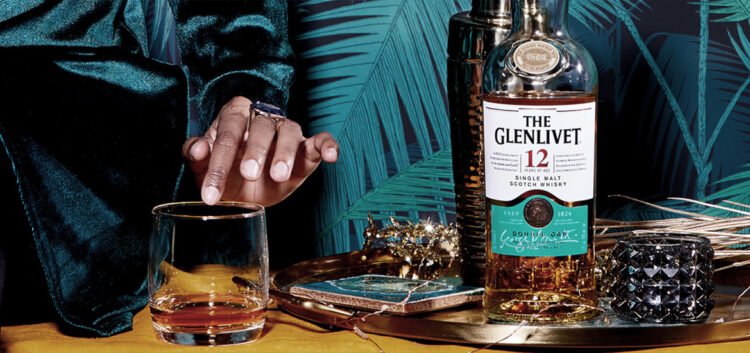Introduction: Glenlivet’s Unmatched Flavor Profile
Glenlivet is a name that resonates deeply with whisky connoisseurs around the world. As one of the oldest and most respected single malt Scotch whisky producers, Glenlivet has long been celebrated for its signature style—light, fruity, and floral, with a complexity that evolves over time. For more than 190 years, Glenlivet has continued to craft whiskies that are not only faithful to the Speyside tradition but also push the boundaries of flavor profiles in new and innovative ways.
What is it about Glenlivet that has earned it such a special place in the world of whisky? Why does this single malt stand out among the sea of other distilleries in Scotland, and how does it manage to maintain its character while embracing modern innovation? In this article, we will explore the deep nuances of Glenlivet’s flavor and characteristics, examining how geography, history, production methods, and innovation have all contributed to making Glenlivet a favorite among whisky lovers.
1. Glenlivet’s Distinctive Flavors: The Core Notes
A. Light and Fruity Characteristics
At the heart of Glenlivet’s appeal lies its remarkably light and fruity character, which has earned it a reputation for being a refreshing and accessible whisky. This signature flavor is the result of the distillery’s careful selection of ingredients and its commitment to maintaining a balanced, smooth style.
The fruit-forward nature of Glenlivet is often characterized by ripe orchard fruits such as apples, pears, and peaches. The distinct sweetness of these fruits is balanced with delicate floral notes of heather and jasmine, creating a whisky that feels fresh and vibrant on the palate.
- Apple: Glenlivet’s signature fruitiness often manifests itself as crisp, slightly tart green apple or the sweet, juicy flavor of ripe red apples. This fruitiness gives the whisky a bright and lively feel.
- Pear: A gentle pear flavor is frequently noted in Glenlivet whiskies, contributing to its smoothness and mouthwatering finish. The pear notes often add a lush quality that elevates the whisky’s drinkability.
- Peach: On some expressions of Glenlivet, particularly those aged in American oak casks, the influence of peach or stone fruit adds complexity to the profile, offering subtle richness and sweetness.
- Floral Notes: The whisky’s floral aspects are often described as light and elegant, with hints of heather, honeysuckle, and jasmine, which contribute to its delicacy and smooth texture.
B. The Influence of Oak and Subtle Spice
Glenlivet’s oak casks, particularly American oak barrels, play a critical role in shaping its flavor profile. The interaction between the whisky and the wood imparts rich, smooth notes of vanilla, caramel, and toasted oak. These flavors are never overpowering, instead offering a subtle yet noticeable layer of sweetness and warmth.
- Vanilla: A hallmark of Glenlivet’s oak maturation, vanilla notes are often present, contributing to the whisky’s smoothness and roundness.
- Caramel: A slight caramel sweetness develops in the older expressions of Glenlivet, especially those that have spent time in ex-sherry casks. This layer of sweetness enhances the whisky’s richness and depth.
- Toasted Oak: Glenlivet whiskies aged in oak barrels, particularly those that have spent time in ex-bourbon casks, develop a nuanced flavor of toasted oak, which adds an earthy warmth to the profile.
- Subtle Spice: As the whisky matures, it often develops a delicate spice profile, with notes of cinnamon, nutmeg, and clove that contribute to the whisky’s complexity without overwhelming the lighter fruit notes.
2. The Role of Maturation in Glenlivet’s Flavor Evolution
A. Cask Types: The Heart of Glenlivet’s Flavor Development
The maturation process is a crucial factor in Glenlivet’s flavor profile. The distillery uses a variety of casks to age its whisky, with American oak and European oak (sherry casks) being the most prominent. The type of wood, as well as the previous contents of the casks, profoundly affects the final character of the whisky.
- American Oak: Glenlivet is well-known for its use of American oak casks, which are responsible for many of the whisky’s signature fruity and vanilla flavors. American oak imparts a lighter, sweeter character to the whisky, with softer, creamier textures.
- Sherry Casks: Glenlivet also uses sherry casks, typically from Spain, which impart richer, darker flavors. Sherry-cask maturation contributes to deeper notes of dried fruit, nutty sweetness, and a touch of spiciness. These casks can add layers of complexity to Glenlivet’s flavor profile, especially in aged expressions like the Glenlivet 18-Year-Old.
- French Oak: Glenlivet has experimented with French oak casks in recent years, adding a unique character to the flavor profile. French oak tends to contribute spicier, bolder flavors and a more tannic structure, which balances well with Glenlivet’s smoother, fruit-driven base.
B. The Influence of Age: How Maturation Shapes the Flavor
Age plays a pivotal role in shaping the flavors of Glenlivet whisky. The longer the whisky ages, the more it absorbs from the cask, leading to the development of deeper, more complex flavors. Older Glenlivet whiskies, like the 18-Year-Old and the 21-Year-Old, showcase richer, more concentrated notes of dried fruits, honey, and oak, providing a more mature, layered experience.
- Glenlivet 12-Year-Old: The Glenlivet 12-Year-Old is one of the most popular expressions of the distillery and showcases a perfect balance of freshness and fruitiness. Its relatively young age allows the whisky to maintain its lively and crisp character, with a slight touch of oak and spice.
- Glenlivet 18-Year-Old: As the whisky matures, the Glenlivet 18-Year-Old reveals more depth, with the influence of sherry casks adding flavors of dried fruits, nuts, and honey. The longer maturation creates a smoother mouthfeel and a more elegant finish.
- Glenlivet 21-Year-Old: With 21 years of maturation, Glenlivet’s 21-Year-Old expressions reveal a beautifully rounded, rich, and complex character, with a sophisticated balance of oak, dried fruit, and toffee flavors.

3. The Special Editions and Innovations: Pushing the Boundaries of Flavor
A. Limited Editions and Unique Finishes
Glenlivet continues to innovate, with limited editions and special releases that explore new cask finishes and aging techniques. These special expressions often push the boundaries of flavor, experimenting with different types of casks and maturation periods to create something new while remaining faithful to the distillery’s signature character.
- Glenlivet 12-Year-Old French Oak: A special edition that highlights the influence of French oak barrels. The result is a whisky with more pronounced spice, tannins, and a slightly drier finish.
- Glenlivet Nàdurra: This unpeated, cask strength whisky is a return to the traditional, full-bodied expressions of Glenlivet. It provides an unfiltered, robust taste that is more intense than the classic expressions.
- Glenlivet Archive 21-Year-Old: A special bottling that combines the classic Glenlivet style with an extended maturation period. It is often revered for its smoothness, rich complexity, and full range of flavors.
4. Tasting Glenlivet: How to Appreciate Its Complexity
A. The Ideal Tasting Conditions
Glenlivet, with its complex flavors, benefits from careful tasting. To fully appreciate its nuances, it is essential to use the proper glassware, such as a Glencairn glass, which allows the whisky’s aromas to concentrate. Tasting Glenlivet at a slightly cooler temperature—around room temperature—is recommended for the full flavor experience.
B. Tasting Notes
A comprehensive tasting of Glenlivet should involve the following steps:
- Appearance: Glenlivet whiskies typically have a pale gold or amber hue, depending on the aging process and the cask types used. This visual cue gives an indication of the whisky’s age and maturation style.
- Nose: Glenlivet is known for its fragrant nose, with initial aromas of fresh fruit—apple, pear, and peach—along with hints of vanilla, floral notes, and a subtle touch of oak.
- Palate: On the palate, Glenlivet offers a smooth, creamy texture with a delicate sweetness that combines with the fruitiness and a touch of spice. The oak influence provides structure and warmth, making the whisky feel balanced and full-bodied.
- Finish: The finish is typically medium to long, with lingering notes of vanilla, caramel, and dried fruit. The light floral notes remain throughout, leaving a refreshing aftertaste.
Conclusion: The Unique Appeal of Glenlivet’s Flavor Profile
Glenlivet’s flavor profile is a masterpiece of balance, showcasing the distillery’s dedication to craftsmanship and innovation. Its fruity, floral nature, combined with subtle oak and spice notes, offers an accessible yet complex whisky experience that appeals to both newcomers and seasoned whisky enthusiasts. Glenlivet’s long history, commitment to quality, and willingness to experiment with new techniques ensure that it will remain a favorite among whisky lovers for years to come.































